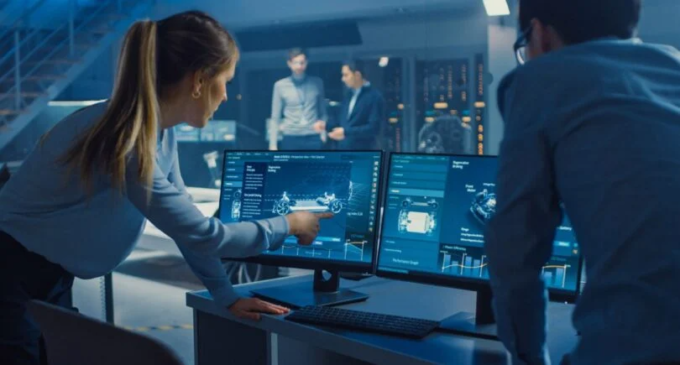In self-driving cars, computationally intensive software from different manufacturers must be coupled with specialized embedded control units and bundled in a central control system. To enable software developers to collaborate efficiently and securely along the entire value chain, 23 European partners researched standardized exchange formats for design and development processes in the PANORAMA research project.
Vehicle electrics and electronics are becoming increasingly sophisticated: more functions and greater technical complexity on the one hand, a large number of actors involved on the other,” says David Schmelter, a scientist at Fraunhofer IEM, describing the problem. “The recipe for success is cross-company, standards-compliant and secure cooperation between software developers. We need to break through classic supply chains and develop software collaboratively in cross-company teams.” To enable such complex collaborations, the PANORAMA consortium defined open de facto standards, tools and best practices for the exchange of formal system models and made them available as an open source ecosystem.
The Eclipse APP4MC development platform enables cross-company design and management of complex tool chains for vehicle electronics and software using the AMALTHEA open exchange format. Fraunhofer IEM explored potential organizational challenges and threats to data security and intellectual property protection. Particular emphasis was placed on detailed AMALTHEA system models. The scientists formulated recommendations for action with which companies can minimize security risks and maintain a trustworthy exchange of information among themselves. For example, developers should share system models only for a specific purpose (such as a particular simulation) and only with the information required for that purpose (data minimization). In this way, direct competitors will also be able to exchange and process sensitive information in their software development in the future.
The joint tracking of software requirements along the development process is an important building block for the functional safety of embedded systems. The time-consuming and so far manual updating of the so-called traceability models bears the risk of inconsistencies in the requirements, which have to be corrected in a time-consuming and costly manner. Fraunhofer IEM is developing MEMO (Multi-objective Evolution of Models), a framework for the open traceability management tool Eclipse Capra that automates this important work.
Using search-based software engineering techniques, MEMO computes high-quality alternative solutions for incomplete or conflicting requirements and proposes them to the development team for selection. With less effort, this significantly increases the quality of traceability models. MEMO is easily extensible for further modeling languages and can be adapted to individual use cases.
In addition to MEMO, Eclipse APP4MC and Eclipse Capra are examples of a number of open source projects that have been developed and enhanced in PANORAMA.
- – Eclipse APP4MC is a platform for the development of vehicle electronics of complex embedded multi- and many-core systems. Via the open exchange format Amalthea, companies design and manage complex tool chains, especially for system simulation and validation. The PANORAMA project partners developed cloud-enabled methods and visualizations for the simulation and validation of these architectures. Companies can thus more easily integrate models from development partners into their own tool chains. More at: https://www.eclipse.org/app4mc/
- – Eclipse Capra is an open traceability management tool for tracking software requirements along the development process. In addition to Amalthea, the PANORAMA project partners integrated other data exchange formats. With Capra, companies track their validation results through software design to requirements – and thus successfully work with their development partners on the safety of embedded systems.
The PANORAMA project was funded in the European funding cluster ITEA 3 by the German Federal Ministry of Education and Research BMBF with a total of 4.3 million euros.



Leave a comment